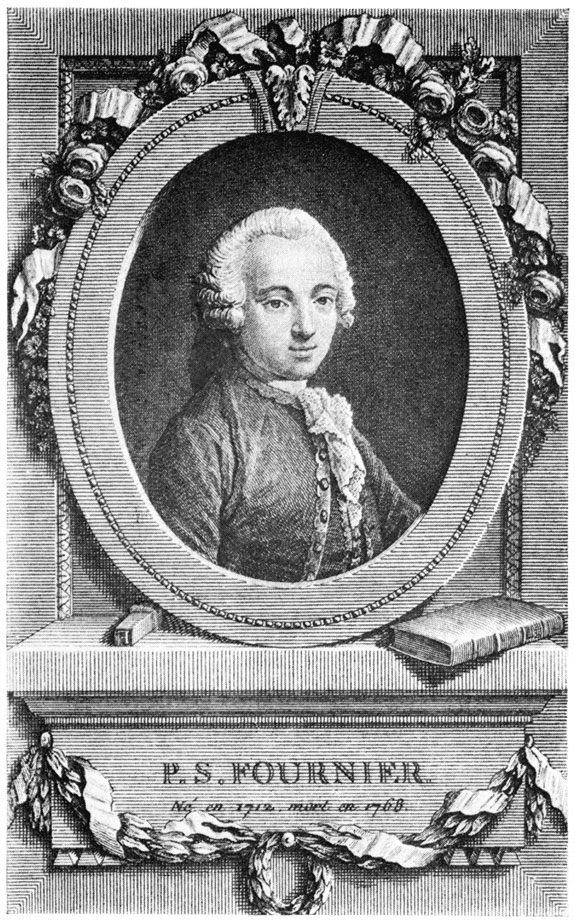January 10

Detail of the frontispiece from "Fournier; The Compleat Typographer" by Allen Hunt.
Pierre Simon Fournier called le juene, applied upon this day in 1757 to be appointed a master printer, without the necessity of serving as an apprentice and journeyman. For Fournier this was no quick way to success, as he was then forty-four years of age and already a distinguished punchcutter and typefounder. He but wished to fill out what has been termed the trinity of the typographic art, by becoming a printer.
There were a number of legal obstacles to Fournier’s request. The Bookselling and Printing Code of France, promulgated in 1723, allowed only members of the Communauté des Imprimeurs to own and operate a press, and only a master printer’s son could enter the Company without serving a four year apprenticeship, being unmarried, conversant in Latin and able to read Greek. Fournier was unable to qualify in any of these conditions.
Citing as a precedent the admittance in 1712 of a typefounder, Pierre Cot, by a special decree which permitted Cot to print a monumental work on typography, Fournier pointed out his own special circumstances. His types, he told the Communauté, were internationally recognized, and had been used as the basis for the establishment of royal foundries in Sweden and Sardinia. He also mentioned his system of type measurement, by units called points, and his many efforts to improve the quality of French types “to save French printing from disgrace at the hands of the Germans.” He was also ready to publish his own typographical writings, covering both typefounding and printing.
In 1762 he received permission to print not only his own works but also music composition, for which he had designed new music types. This addition aroused the ire of Ballard, a music publisher who then enjoyed a monopoly in that specialty. Ballard opposed the order of the Communauté and induced them to ask the Chief of Police to suspend the new privilege granted to Fournier. This official visited the typefounder and later gave him permission to print his own writings in an edition to be called Manuel Typographique. The first volume of this book was issued in 1764. Founder’s ambition to write a complete printing manual was never realized. His first volume covered the art of typefounding, and the second volume—published in 1766—was a survey of the history of European typefounding.
At his death in 1768, the founder had done nothing on the volume of printing practices, but he had written a number of essays on the lives of the great typographers. The Manuale therefore does not live up to its name, but it is one of the great works on typefounding, containing much of the information upon which later scholarship has been based. To most printers the book is justly famous as the source of information concerning the Point System evolved by Fournier. This system was instrumental in bringing some order to the almost chaotic procedures of the world’s typefounders, practices which had existed for over three hundred years.
A tip of the Typochapeau to Paul Moxon for his aiding & abetting us with imagery for this post.